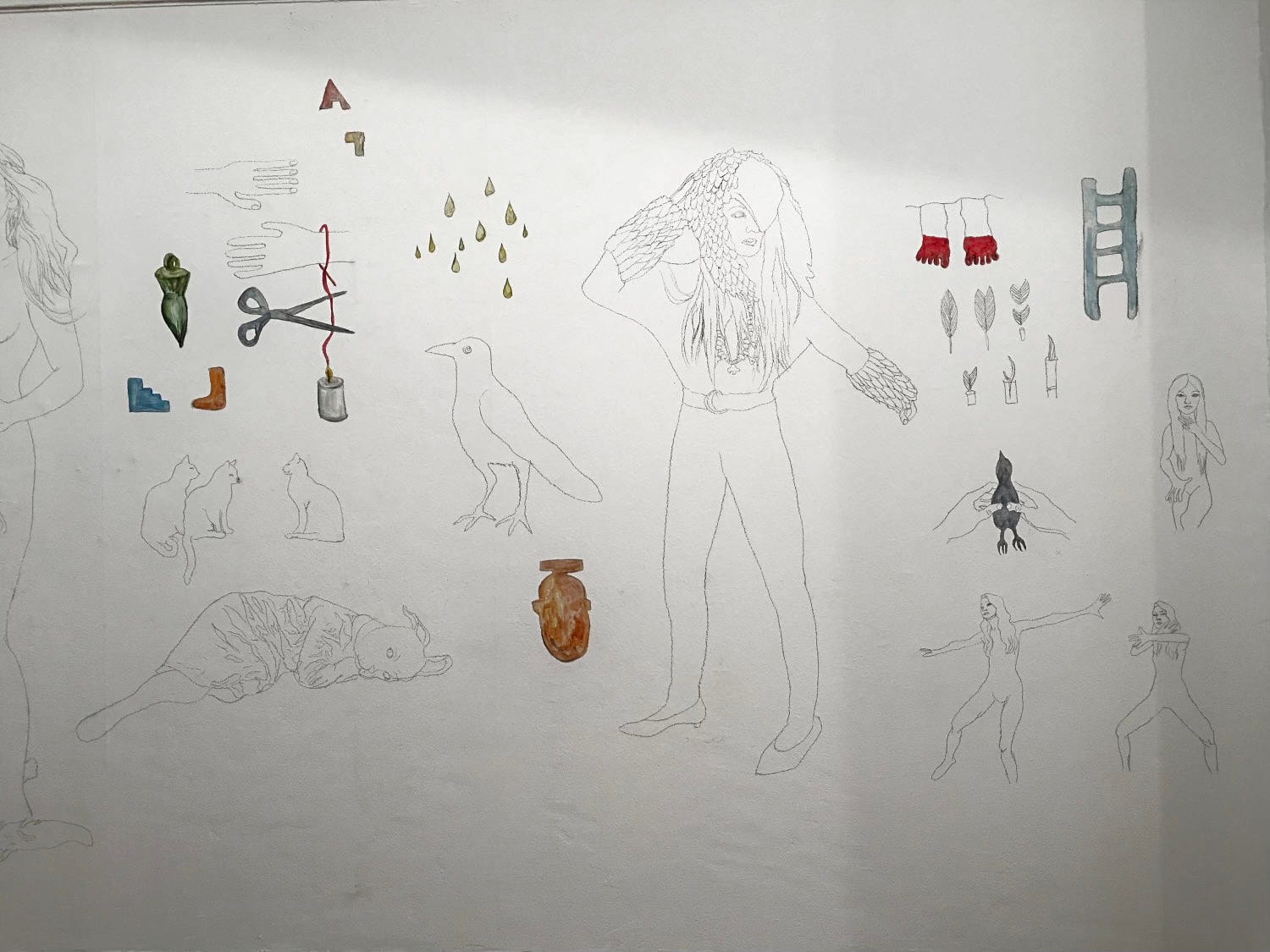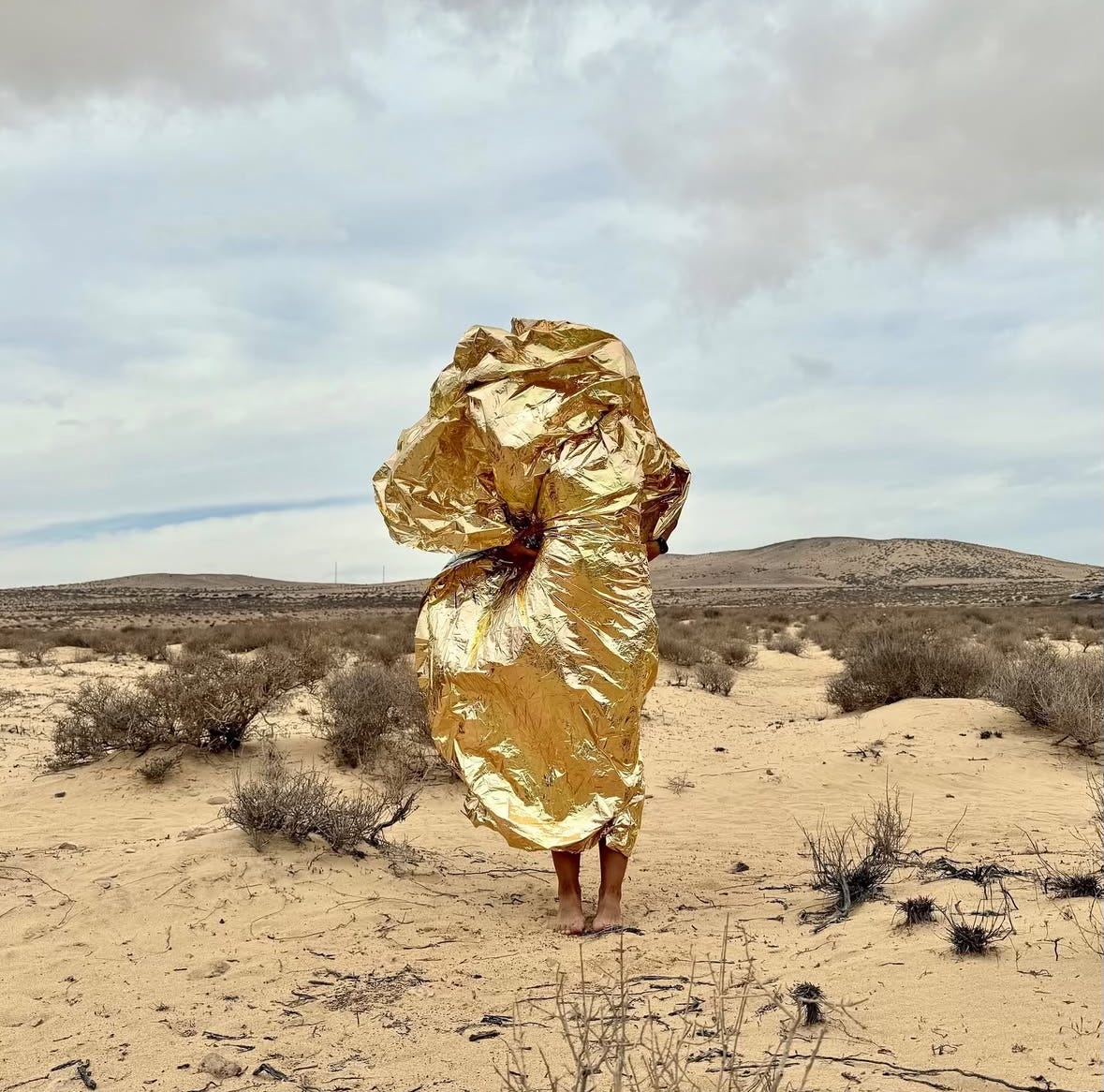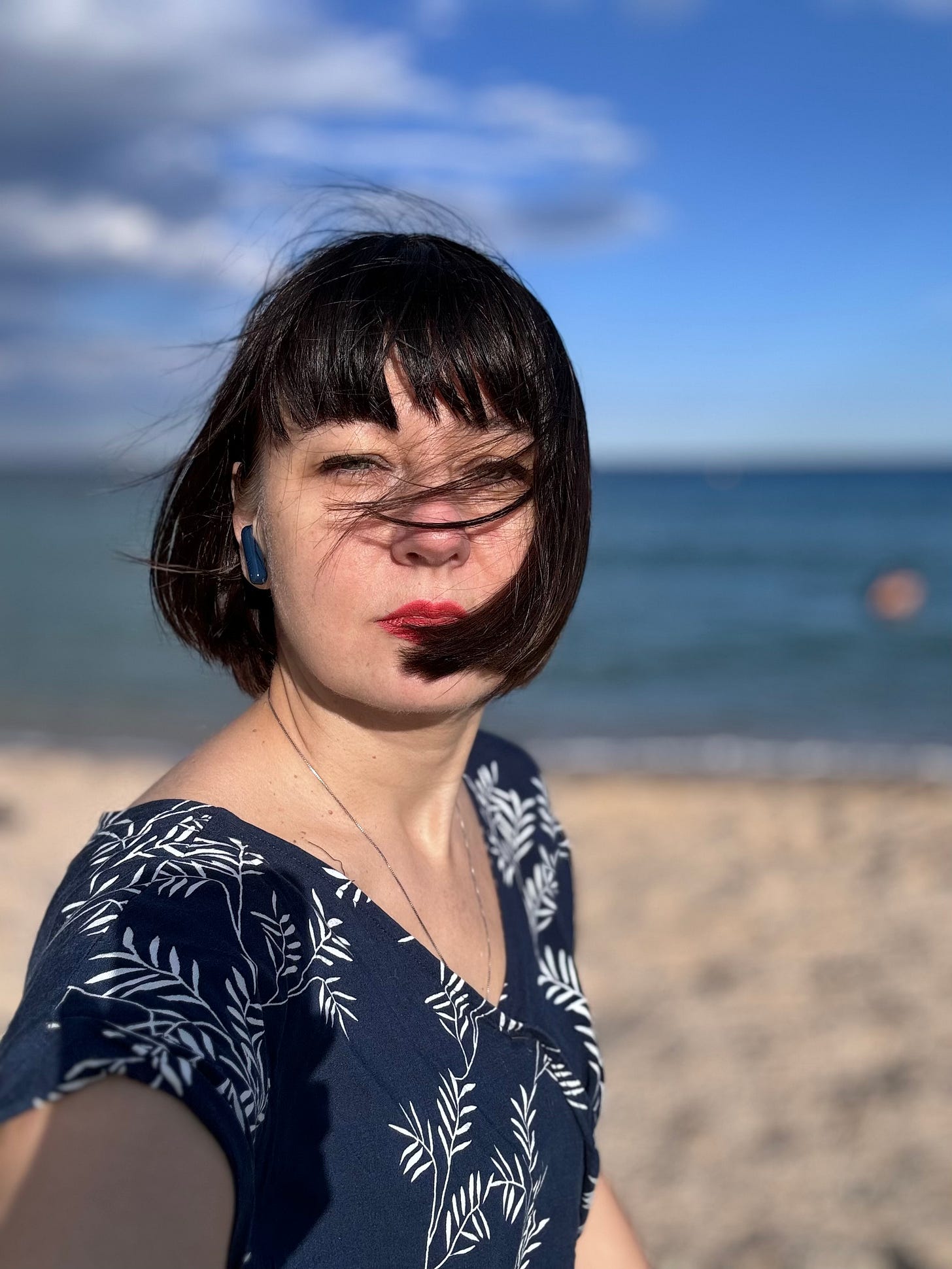Invisibilia: Weaving Ancient Practices, Memory, and Modern Expression
A conversation with Tarantula: Authors and Art's inspiration for October, Gordana Žikić
Gordana Žikić, born in Belgrade and now based in Barcelona, often appears at art fairs and residencies across Northern Europe. We first encountered her at Juxtapose in Denmark, where she exhibited with RUM два, an artist-run initiative connecting the Nordic and Balkan art scenes. Her table overflowed with miniature objects; she invited us to hold a bundle of cat whiskers used in her rituals. We met again at the Supermarket Art Fair in Stockholm. Žikić ran through the hallways wearing a black rabbit mask, handing out stickers depicting objects from her shamanic practice while presenting her pandemic-inspired project, Virtual Studio Groups. Most recently, she staged a solo exhibition at Detroit Stockholm, showing large-scale raw canvas installations alongside the meditative “Cut” works of her creative partner, Bosko Begovic. While her canvases reflected her classical fine arts training, she encouraged us to walk among them, touch them, and engage physically with the beautifully colored abstractions.
Žikić’s energy, though spread across many projects, remains playful and contagious. She crafts rituals for her audience, inviting them directly into her artistic process. As an interdisciplinary artist, she reimagines ancient rituals and symbols through contemporary art, exploring how spiritual traditions can reshape modern expression. Her work opens space for reflection and collaboration, highlighting how personal narratives intertwine, challenge, and mirror international stories, fostering a dialogue that transcends cultures and time.
Tarantula: Authors and Art: Is there an underlying source or purpose that ties together your artistic practice, community work, and curatorial vision?
Gordana Žikic: I believe that everything is deeply interconnected, and there is no clear line between art and life. My inspirations, experiences, and research shape how I see the world, and this perspective naturally informs all aspects of what I do. My artistic practice is not something separate from my community work or curatorial vision; they grow out of each other in an organic way.
Curating is a creative extension of my own practice, where I can translate my artistic questions into a broader framework and create dialogue.
Since 2013, I have run the Belgrade Artist in Residence program, hosting and collaborating with around a hundred artists from across the world. For years, we also had a gallery in Belgrade, a physical meeting point for exhibitions and events. Although the gallery no longer exists, the residency continues as a space for exchange. The residency has been deeply important. I learned from each participating artist, and everyone I met expanded my world and perspective. In many ways, I felt I was also in residency each time. These experiences enriched my practice and broadened my curatorial vision.
During the pandemic, the best way to connect was the creation of our Virtual Studio Groups. Now it has grown into a lasting international community where artists continue to exchange ideas, support one another, and experiment with new forms of collaboration.
In all of these areas, my own art-making, curatorial work, and community building projects, there is a common thread of seeking connection, dialogue, and transformation. For me, art is not just about producing objects, it is about creating and nurturing relationships between people and ideas.
As someone who meddles in different mediums, how do you decide which form best serves a new project?
As a material based artist, I am often drawn to things that are not usually considered fine art, such as feathers, hair, copper wire, dried plants, and different found objects, and I like to see how they transform when they are placed in new contexts. Each project begins almost like a call from a material. A fragment catches my attention, and I feel drawn to explore it and then the pieces start to find their place; the concept becomes clearer.
It is hard to say whether concept or material comes first, because often they arrive together, and in conversation. Sometimes I start with something small and seemingly insignificant, and it becomes a guide that intuitively reveals the next steps. This counterintuitive process challenges traditional boundaries because the artwork is not a fixed object, production oriented, but there is always a dialogue between concept, material, chances and intentions.
In this way, each project is different, yet always connected, whether I make an installation, performance, mask, painting, … the form is always led by the material itself.


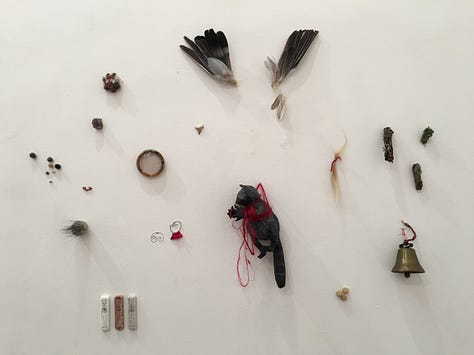
As someone who studied fine arts, when did you realize that a single form of expression felt too limiting? And do you find yourself drawn to one form more than others?
I began as a painter because in Belgrade at that time, it was almost the only way to become an artist. The academy was very traditional, you could choose painting, sculpture, or printmaking, and that shaped how I first understood what an artist was supposed to be. For a while, I accepted that frame, but through my own practice, I gradually realized that one form was too limiting for the questions I wanted to explore.
After finishing my bachelor’s degree, I wanted to explore more ways to express myself. During my PhD, the research led me to start experimenting with different mediums, sculptures and masks, found objects, and installations. I saw more clearly how ideas can unfold across different forms and the boundaries started to fade. Since I was creating masks and photographing myself in them, at first just to use as references for drawing. Over time, performance emerged naturally. Today I don’t feel drawn only to one form, but I return to performance often as the way to connect different elements in one work, such as body, ritual, and material …
Can you share one of your works as an example of how research shapes your creative process?
I often return to my doctoral exhibition Red Deer – Anthropological Studies of New Visuality. In this work, my research of shamanism, neo-shamanism, and archetypes shaped the content and the form of the exhibition. I researched how ancient spiritual practices can be reinterpreted within a contemporary artistic framework and I wanted to test a theory on how a contemporary artist can be like a shaman, mediating between worlds, transforming materials, and creating spaces for reflection.
These ideas were incorporated into the creation of the installation in the gallery: a series of wall drawings, an installation made from small objects, some found in nature, or sculptures that I made using minerals, feathers, copper wire, cat hair, objects from my personal archive … Through this process of transformation, everyday materials were recontextualized as “sacred” objects. I was interested in creating an ambient environment in the gallery, a ritual space, inviting viewers to a different way of perceiving the gallery space and the art. The exhibition became an experiment in how contemporary art can encourage reflection on the spiritual in modern life.
Also, through research, I was discovering that similar principles or forms existed in ancient rituals or tribal traditions, very similar to one that I was creating by experimenting with materials intuitively and playfully. This idea that intuitive making could unknowingly touch something archetypal and embedded in human history was a revelation. In this way, my creative process was inseparable from the theoretical and anthropological research that informed it. But the research didn’t just inform the work, it also helped me to recognize what I was already doing, to place it in a broader anthropological and symbolic context.
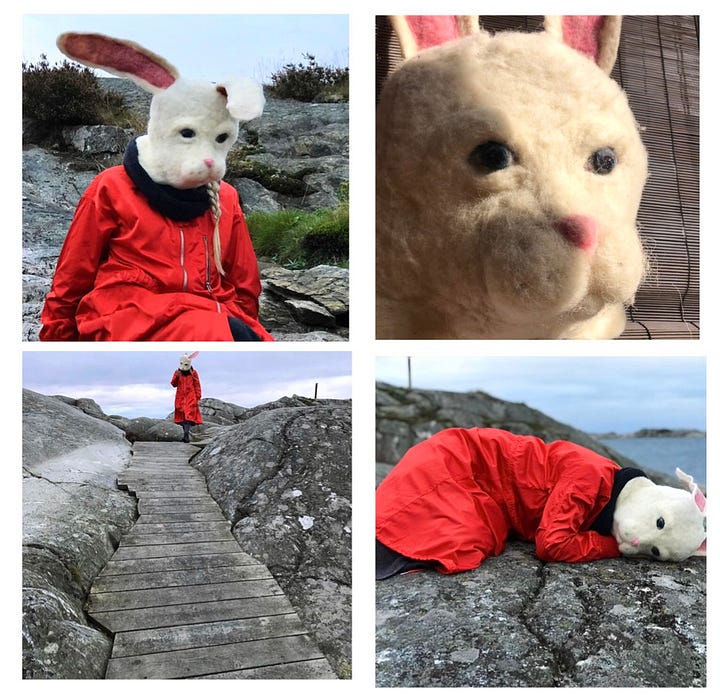

Your performances draw on shamanic elements. How do these practices relate to the traditions of your country of origin, and how do you also engage with influences from other cultures?
Growing up I was fascinated by my grandmother’s specific relationship with invisible forces and the way she read signs, spoke about spirits, and ruled what felt like an interesting and strange world. She read coffee traces, a practice common in the Balkans, and she was very skilled at it. I would watch and learn from her hidden images and stories in the cup. For me, this created a sense of magic in everyday life, how rituals could open a way to other realities, and that the invisible could be found in ordinary things. Those early experiences became a personal foundation for my later research and my works.
In my PhD research, I explored Mircea Eliade’s writings on shamanism, particularly his idea that many pre-religious cultures shared recurring shamanic structures and experiences. For me, this sense of universality is important. It suggests that shamanism is not bound to one country or one tradition, but can be seen as part of a broader human heritage. It can be seen as a set of practices and symbolic frameworks that refer to shared human needs for transformation, mediation between visible and invisible realms, and the ritualized use of objects. These ideas became the foundation of my practice.
I sometimes draw inspiration from specific rituals, for example, in one performance, the Slavic rainmaking ritual Dodole, but they are never my only and central focus. Instead, I work with the underlying principles. I am re-contextualizing everyday materials into symbolic objects, creating ritual-like environments, and inviting viewers to change their perception. In this way, my performances are not about repeating tradition but more about exploring how shamanic principles can be reimagined in contemporary art, connecting the personal and the universal.

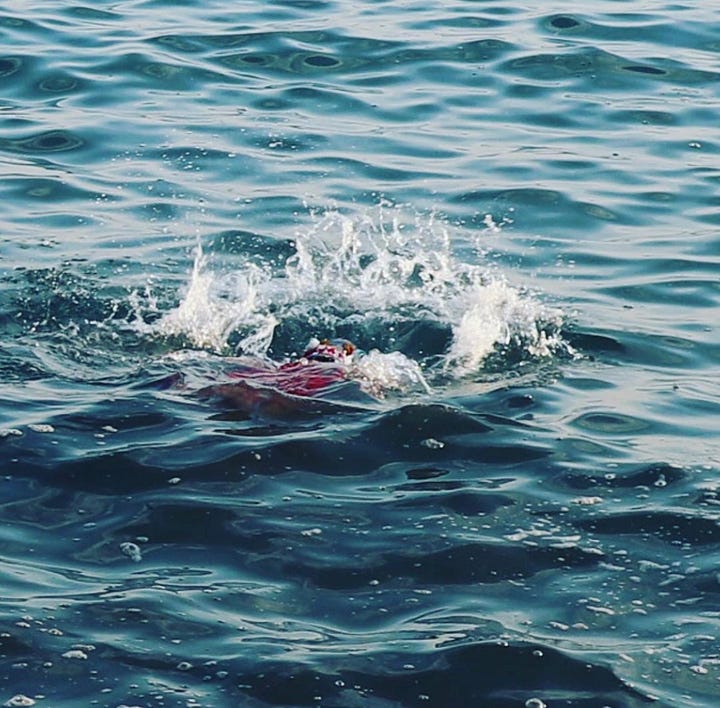
How has your recent move to another country influenced your creative process and artistic work?
When I moved to Barcelona, it felt more like a return. From the first time I visited, and then studied there, I had the strange sense that this city was home, and that feeling has only deepened. Because I already knew the city and had friends here, integration was smooth, and my practice continues to be shaped by this place.
Some of the performances I made reflect on identity, freedom, migration, and the idea that one defines own path, without constriction and expectations from society, national borders, or predefined roles. Works such as Thank You and Goodbye, which marked my departure from Belgrade, then Let It Be, and Home, in Barcelona, were ritual explorations of freedom, transition, and belonging. Each performance enacted the process of letting go and opening toward new beginnings.
Barcelona’s sea is another ongoing influence. For over a decade, whenever I visited Barcelona and now continuing, I have photographed and filmed the sea surface from a pier, building an archive for the bigger project that includes video, drawings, and paintings. Seen from above, the water seems to boil from within, echoing my own inner restlessness and I feel that also creates balance and peace through its movement.
Parallel to these performances and installations, I continue to work with photography as a daily practice, mostly using Hipstamatic and Polaroid to capture the atmospheres, changes of light and seasons … These images form a visual diary and show that Barcelona is my collaborator and how it influences my work.
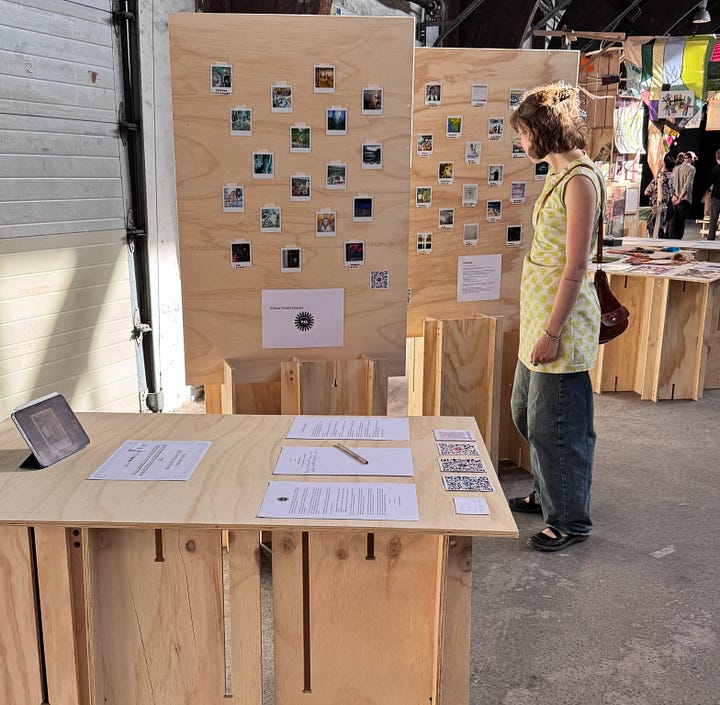

In an art world often shaped by competition, scarce resources, criticism, and ego, what inspired you to pursue community building?
The world is what we make of it, just as art is what we create. By focusing on growing and changing ourselves first, we influence and improve the world around us. Connecting with others expands our perspectives, enriches our experiences, and allows us to grow, individually and collectively.
I learned this through direct experience: meeting artists from all over the world, first while running an art residency in Belgrade, and then developing the Virtual Studio Groups — an online community where artists connect, share, and support one another. These spaces are vital because they allow exchange and collaboration. Everyone needs a place where ideas, experiences, and creativity can be shared freely.
I also believe that we live in a time of opportunities, knowledge, communication, and with more available creative tools than ever before. This gives a chance to build communities that are supportive rather than competitive.
By sharing ideas and supporting each other, we can create meaningful impact, contribute to growth, and explore new possibilities together.
Community building, for me, is about creating those spaces where artists can be connected to collaborate, share, support each other, and grow together. This can influence the world around them in meaningful ways.
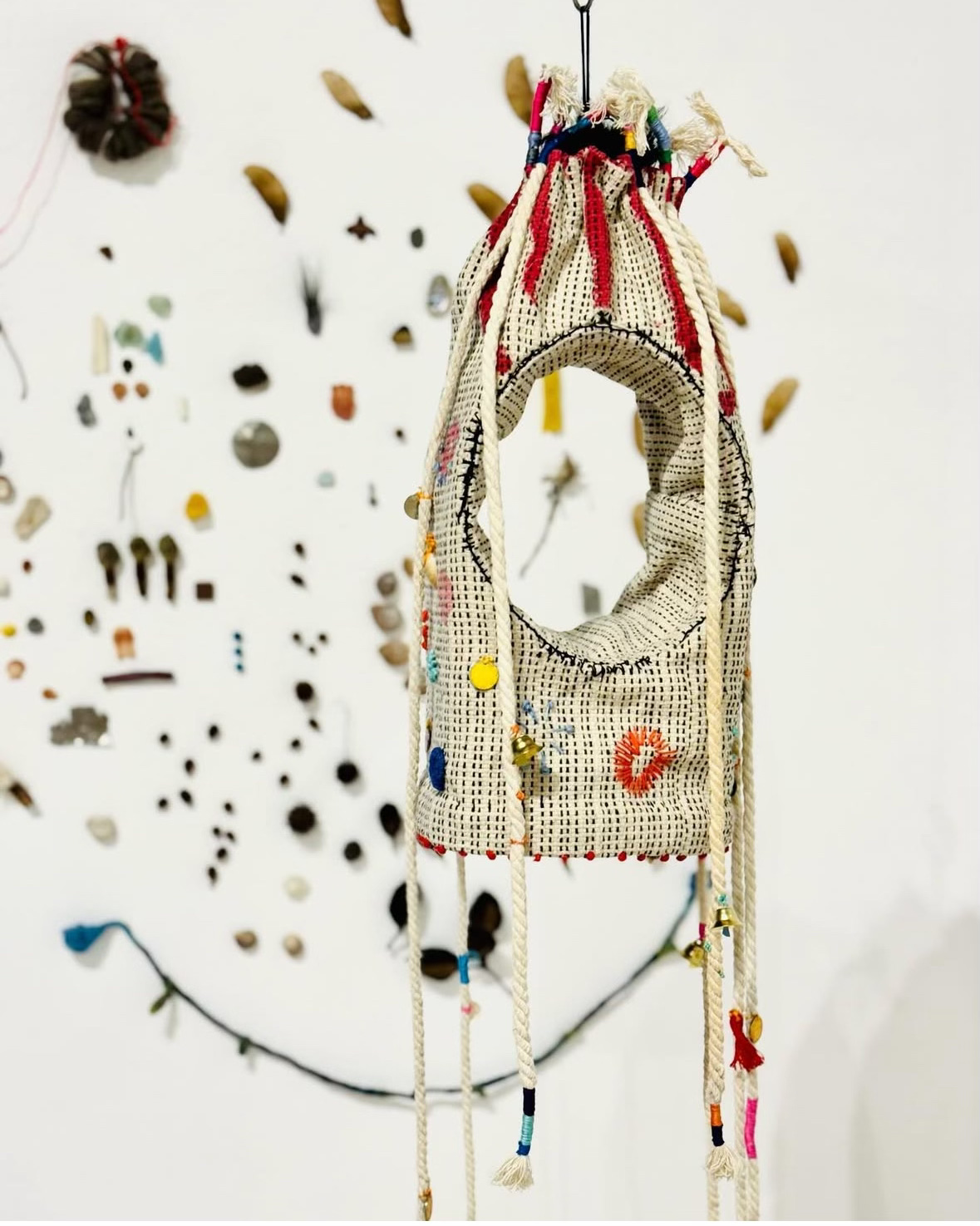
Several of your works explore your ADHD diagnosis. How can art help individuals or society engage with mental health in an era where such diagnoses are more prevalent?
My works often explore my experience with ADHD, which I came to understand through research and self diagnosis. Discovering ADHD gave me a framework to understand why I had always felt different and why certain ways of thinking and feeling came naturally to me. Growing up, I often struggled to fit into societal norms, and it was frustrating and confusing. Understanding my brain through researching online opened a world of possibilities, including exploring my thoughts, feelings, and motivations more deeply.
Art has been an essential tool for me, it allows me to shape my thoughts, find focus, and enter a flow state where everything makes sense according to my own logic. It has allowed me to express, explore, and find clarity. For example, in my performance Empty Head, I explore ADHD traits and the pursuit of mental clarity. I created a ritual where I placed notes, ideas, and inspirational writings through a hole in my headdress, symbolically transforming ADHD, and holes in my memory.
I believe art has potential that extends beyond personal healing, to help society engage with mental health in more open and compassionate ways. Creativity is necessary for all of us, it helps us process our experiences, to understand ourselves, and to navigate the world.
Today, mental health awareness is more important and art can provide tools to explore individuality, reduce stigma, and celebrate difference. There is no universal normal and everyone has unique ways of experiencing the world and life. Art allows us to honor these differences, offering both personal clarity and collective understanding.

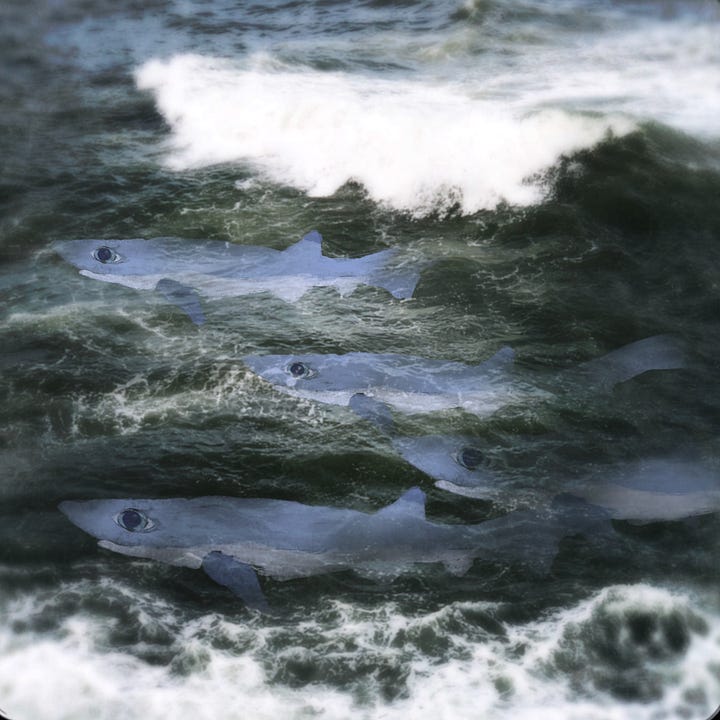
You are clearly a dreamer, but even in your work, Dream, not everything is utopian—sharks and other dangers emerge from the depths. Using all your forms – color, body, photography, and more – how to do you imagine a world for all of us?
I imagine a world where artists are more connected, collaborative, and empowered to shape their own futures. I want to build on this by developing platforms for connection that go beyond what we already have. The Virtual Studio Groups was one step, but I see the potential for something larger, an infrastructure that supports artists internationally, enabling exchange, collaboration, and visibility across borders.
With new digital tools, especially those emerging through Web3, there are new possibilities for artists. These technologies can open ways for artists to share work directly, build communities around their practice, and take part in shaping how their work circulates. For me, the important part is how this can shift power, giving artists more autonomy, more transparency, and more sustainable models of support that are not dependent only on galleries or traditional institutions.
In this sense, my vision of a world for all of us is one where creativity and care are combined with new forms of agency, and where artists not only create but also actively shape the structures that support art.
Thank you Gordana Žikić, for sharing your work with us. To learn more about Žikić’s work, visit her Instagram and webpage.


